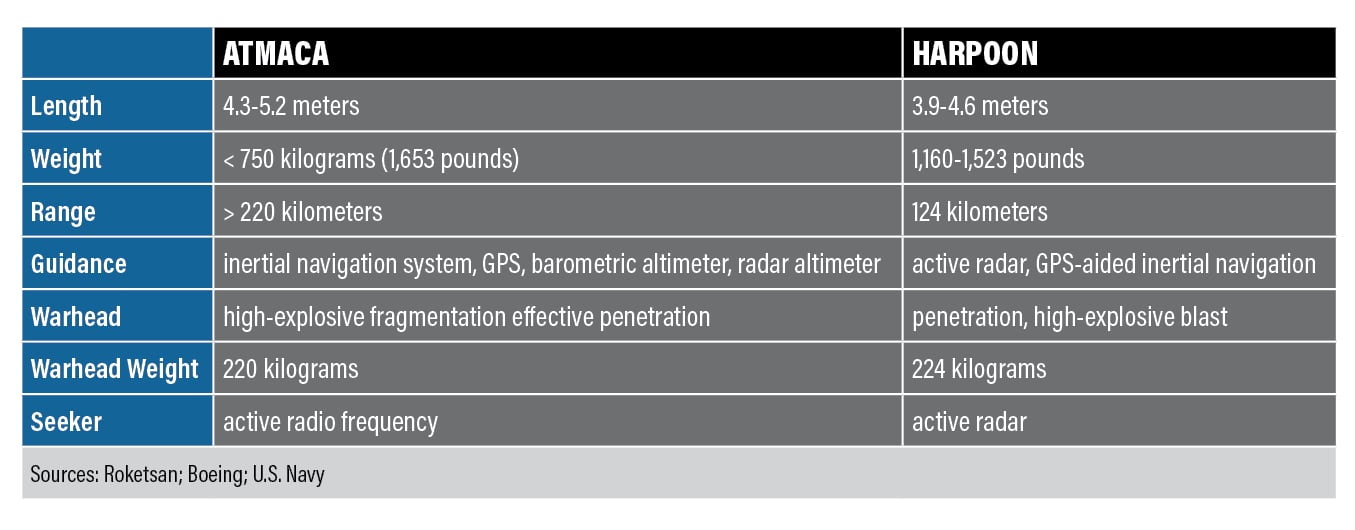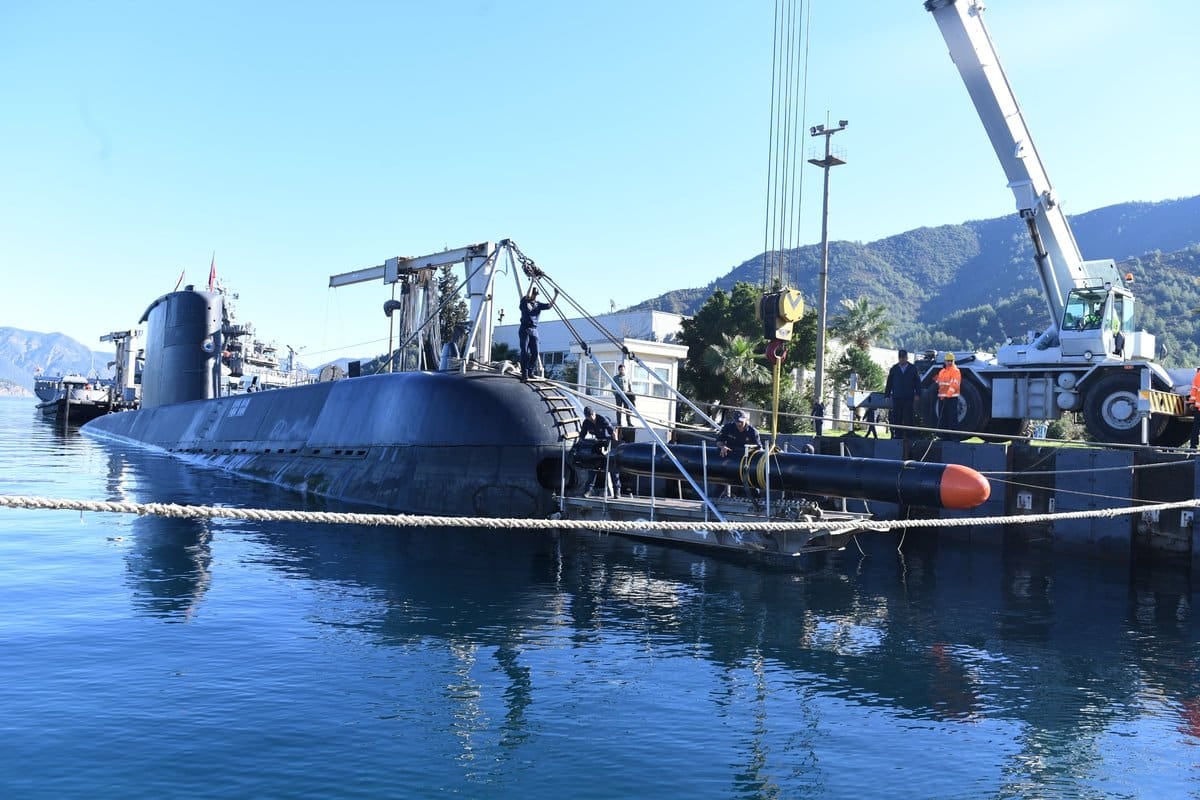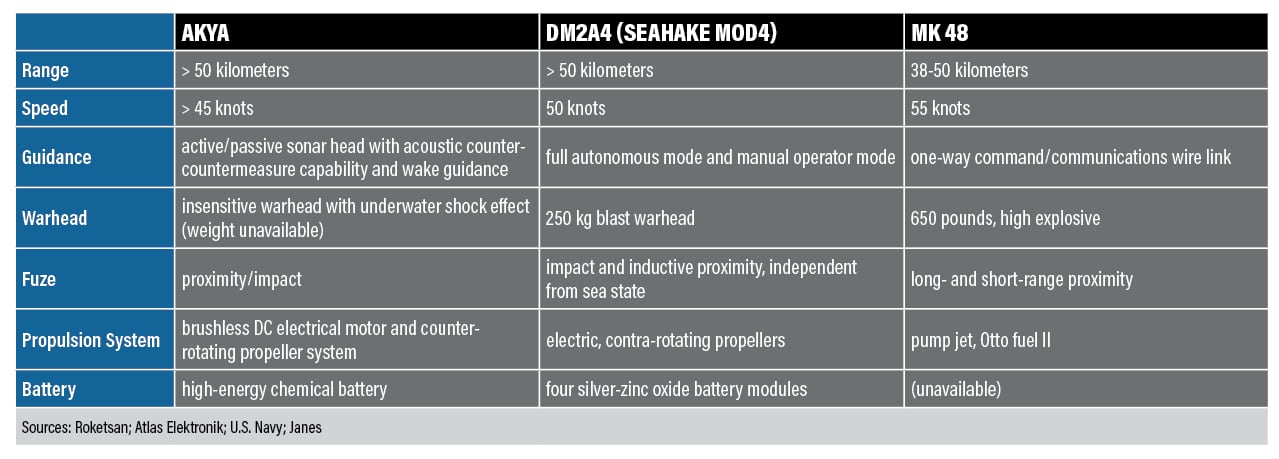MERSIN, Turkey — The Turkish government has signed contracts to replace some foreign-made weapons with locally produced versions, the Defense Ministry announced.
The deals, finalized Jan. 20 with the defense contractor Roketsan and other domestic organizations, sets the stage for the mass production of the Akya torpedo, the Atmaca cruise missile and the Sapan air defense weapon, all made by Roketsan. These systems would help fortify the Turkish navy’s strike power.
Roketsan did not respond to Defense News’ request for contractual details.
“With its technological infrastructure, production capacity and engineering capabilities, Turkey has become a production base for critical technologies. The importance of these projects in the defense industry is better understood in the face of the threats and dangers posed by the sensitive developments in our region and the world,” Defense Minister Yaşar Güler said at the signing ceremony in Ankara.
Other attendees included the chief of naval operations, Adm. Ercüment Tatlioglu; the head of the Defense Industry Agency, Haluk Görgün; and representatives of the companies involved.
The Defense Ministry did not reply to Defense News’ request for further information.
Hello Hawk, goodbye Harpoon
Atmaca (which translates to “Hawk” in English) is a long-range, anti-ship cruise missile developed by Roketsan. It is intended to gradually replace Turkey’s existing inventory of Boeing-made Harpoon missiles.
The navy began the program for a surface-to-surface cruise missile in 2009. As the prime contractor, Roketsan started design studies in September 2012.
The first ship-launched test occurred in November 2019 using the corvette TCG Kinaliada. Following numerous tests in various scenarios, including GPS-free firing and operating in an electronic warfare-heavy environment, the missile was deemed ready for mass production. The final tests concluded in June 2021, and the missile achieved initial operational capability.
In an online meeting held in August 2023 by SAHA Istanbul, a defense expo business in Turkey, the chief executive of the local company STM said the firm signed an agreement with Roketsan to equip 11 naval platforms with Atmaca missiles.

Torpedo swap
The heavyweight torpedo Akya successfully underwent live-fire testing on the first Preveze-class submarine, TCG Preveze. The weapon’s integration into the submarine class is underway, with plans for subsequent deployment on Gür-class subs.

The Akya is expected to replace the Atlas Elektronik-made DM2A4 (SeaHake mod4) and Lockheed Martin-made MK 48 heavyweight torpedoes.
The Akya, which Roketsan designed to engage other submarines and surface targets, can operate autonomously, or a user can control the weapon via a fiber-optic cable. It features an active/passive sonar homing head, and uses wake-steering technology specifically tailored to engage surface targets.

Sapan enters the picture
The Sapan air defense missile is intended to replace the Evolved Seasparrow Missile, a surface-to-air weapon made by RTX, formerly known as Raytheon Technologies.
Derived from Roketsan’s Hisar RF surface-to-air missile, the Sapan entered service with the navy for the frigate TCG Istanbul. While Sapan is said to boast a range exceeding 35 kilometers (22 miles), the company has not disclosed specific specifications.
Roketsan is currently integrating the Siper air defense system with the Midlas vertical launching system on I-class frigates. This is expected to enhance the navy’s ability to engage aerial targets at ranges exceeding 100 kilometers.
Tayfun Ozberk is a Turkey correspondent for Defense News.




